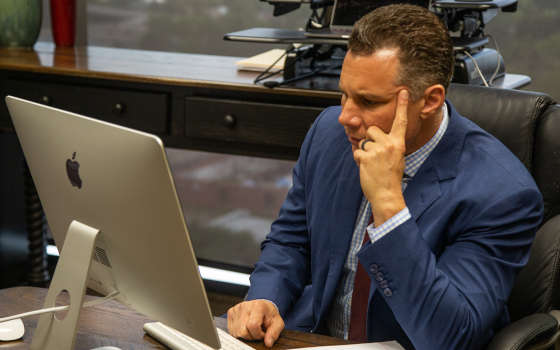In Ciminelli v. United States, No. 21-1170, Ciminelli was convicted of wire fraud for his role in a scheme to rig the bid process for obtaining state-funded development projects.
In this case, we must decide whether the Second Circuit's longstanding "right to control" theory of fraud describes a valid basis for liability under the federal wire fraud statute, which criminalizes the use of interstate wires for "any scheme or artifice to defraud, or for obtaining money or property by means of false or fraudulent pretenses, representations, or promises."
Ciminelli v. United States, No. 21-1170, at *4 (May 11, 2023)
The Supreme Court held that the right-to-control theory, which focuses on depriving a victim of valuable economic information, does not constitute a valid basis for wire fraud liability under the federal fraud statutes. Tyler Criminal Defense Blog
“Because "potentially valuable economic in- formation" "necessary to make discretionary economic decisions" is not a traditional property interest, we now hold that the right-to-control theory is not a valid basis for liability under §1343. Accordingly, we reverse the Second Circuit's judgment.” Ciminelli v. United States, No. 21-1170, at *4-5 (May 11, 2023)
The case centered around the Buffalo Billion initiative, a project aimed at investing $1 billion in development projects in upstate New York. Ciminelli, the head of a construction company, was allegedly involved in a scheme along with other individuals to manipulate the bid process to secure lucrative contracts under the initiative. The scheme alleged involved paying bribes and tailoring requests for proposal (RFPs) to favor Ciminelli's company.
Ciminelli and his co-conspirators were indicted on multiple charges, including wire fraud under 18 U.S.C. §1343 and conspiracy to commit wire fraud under §1349. The government relied on the Second Circuit's right-to-control theory, which posits that wire fraud can be established by depriving a victim of potentially valuable economic information necessary for discretionary economic decisions.
The Supreme Court examined the text and historical interpretation of the federal wire fraud statute and concluded that the right-to-control theory does not align with its requirements. The court emphasized that the wire fraud statute is limited in scope to the protection of property rights. While lower federal courts had interpreted the statute to include intangible interests, such as the right to control one's assets or access to honest services, the Supreme Court clarified that the fraud statutes protect only traditional property interests.
The court traced the development of the right-to-control theory, noting that it emerged after a landmark Supreme Court decision, McNally v. United States, in 1987, which confined the fraud statutes to the protection of individual property rights. Congress responded to McNally by enacting §1346, which revived only the intangible right of honest services. “This Court halted that trend in McNally v. United States, 483 U.S. 350, which confined the statutes to the "protect[ion of] individual property rights." Id., at 359, n. 8.” Ciminelli v. United States, No. 21-1170, at *2 (May 11, 2023). Congress's silence regarding other intangible interests indicated that the wire fraud statute should not be expanded to cover the intangible right to control.
“Because the right to valuable economic information needed to make discretionary economic decisions is not a traditional property interest, the Second Circuit's right-to-control theory cannot form the basis for a conviction under the federal fraud statutes. Pp. 4-10.” Ciminelli v. United States, No. 21-1170, at *2 (May 11, 2023).
This blog post was prepared with the assistance of ChatGPT-4 AI. Nothing in this post should be considered legal advice or the creation of an attorney-client relationship. This blog is strictly for informational purposes only.







